What is 6y8dghklp Ransomware
6y8dghklp Ransomware ransomware is categorized as dangerous malicious software as if your device gets it, you might be facing serious problems. It’s possible you’ve never encountered this kind of malware before, in which case, you may be especially surprised. Your files may have been encoded using strong encryption algorithms, blocking you from opening files. Because file decryption isn’t always possible, in addition to the time and effort it takes to return everything back to normal, file encoding malware is thought to be a highly dangerous infection. 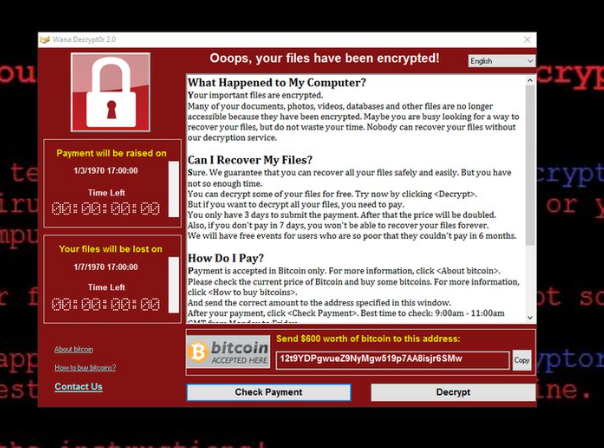
On our test system, 6y8dghklp ransomware encrypted files and modified their filenames. Original names were appended with a unique ID assigned to the victim, the cyber criminals’ email address, and a “.6y8dghklp” extension. For example, a file initially titled “1.jpg” appeared as “1.jpg.id[9ECFA84E-3481].[datarecoverycenterOPG@onionmail.org].6y8dghklp”.
You do have the option of paying the ransom but that’s not the best idea. It’s possible that you will not get your data unlocked even after paying so your money might just be wasted. It may be naive to believe that cyber criminals will feel obligated to help you in data recovery, when they could just take your money. Furthermore, your money would also support their future activities, such as more ransomware. File encoding malware already does billions of dollars in damage, do you really want to be supporting that.
All your files have been encrypted!
All your files have been encrypted due to a security problem with your PC. If you want to restore them, write us to the e-mail datarecoverycenterOPG@onionmail.org
Write this ID in the title of your message –
In case of no answer in 24 hours write us to this e-mail:datarecoverycenterOPG2023@onionmail.org
You have to pay for decryption in Bitcoins. The price depends on how fast you write to us. After payment we will send you the tool that will decrypt all your files.
Free decryption as guarantee
Before paying you can send us up to 5 files for free decryption. The total size of files must be less than 4Mb (non archived), and files should not contain valuable information. (databases,backups, large excel sheets, etc.)
How to obtain Bitcoins
The easiest way to buy bitcoins is LocalBitcoins site. You have to register, click ‘Buy bitcoins’, and select the seller by payment method and price.
hxxps://localbitcoins.com/buy_bitcoins
Also you can find other places to buy Bitcoins and beginners guide here:
hxxp://www.coindesk.com/information/how-can-i-buy-bitcoins/
Attention!
Do not rename encrypted files.
Do not try to decrypt your data using third party software, it may cause permanent data loss.
Decryption of your files with the help of third parties may cause increased price (they add their fee to our) or you can become a victim of a scam.
And the more people give them money, the more of a profitable business ransomware becomes, and that attracts many people to the industry. Investing the money that is requested of you into backup may be a wiser option because file loss wouldn’t be an issue. If backup was made before the ransomware infected your system, you can just remove 6y8dghklp Ransomware virus and unlock 6y8dghklp Ransomware files. If you didn’t know what ransomware is, it’s also possible you do not know how it managed to infect your device, which is why you should carefully read the following paragraph.
!!!All of your files are encrypted!!!
To decrypt them send e-mail to this address: datarecoverycenterOPG@onionmail.org.
If we don’t answer in 24h., send e-mail to this address: datarecoverycenterOPG2023@onionmail.org
Ransomware spread methods
Most typical ransomware spread methods include through spam emails, exploit kits and malicious downloads. It’s usually not necessary to come up with more elaborate methods since plenty of people are pretty careless when they use emails and download something. However, there are ransomware that use more sophisticated methods. Crooks don’t need to do much, just write a simple email that less careful users could fall for, attach the infected file to the email and send it to possible victims, who may believe the sender is someone trustworthy. Money related problems are a common topic in those emails since users tend to engage with those emails. And if someone like Amazon was to email a user that suspicious activity was observed in their account or a purchase, the account owner may panic, turn hasty as a result and end up opening the added file. There a couple of things you ought to take into account when opening email attachments if you want to keep your system safe. Check the sender to see if it’s someone you’re familiar with. Even if you know the sender, don’t rush, first check the email address to make sure it is legitimate. Obvious grammar mistakes are also a sign. The greeting used might also be a clue, a real company’s email important enough to open would include your name in the greeting, instead of a universal Customer or Member. Weak spots on your system Out-of-date programs could also be used to infect. Vulnerabilities in programs are usually discovered and software developers release updates so that malevolent parties cannot exploit them to contaminate systems with malicious programs. As WannaCry has shown, however, not everyone rushes to install those patches. Situations where malicious software uses weak spots to enter is why it’s important that your programs are often updated. If you think the notifications about updates inconvenient, you can set them up to install automatically.
What does it do
Your files will be encoded by ransomware soon after it infects your device. Even if infection was not evident from the beginning, you will certainly know something’s not right when files don’t open as they should. You’ll know which files have been affected because a strange extension will be added to them. Some file encrypting malware may use powerful encryption algorithms, which would make decrypting data very difficult, if not impossible. After all data has been encrypted, a ransom note will be placed on your computer, which will attempt to clear up what has occurred and how you should proceed. If you believe the crooks, you’ll be able to restore files through their decryption utility, which will evidently not come for free. The note ought to show the price for a decryptor but if that is not the case, you’ll have to email hackers through their given address. Obviously, paying the ransom is not encouraged. You ought to only consider paying as a last resort. Try to recall whether you have ever made backup, maybe some of your data is actually stored somewhere. You might also be able to locate a decryption utility for free. There are some malware researchers who are able to decrypt the ransomware, therefore they might release a free program. Before you decide to pay, consider that option. Using that money for a credible backup might do more good. If backup was created before the infection took place, you can recover files after you terminate 6y8dghklp Ransomware virus. Now that you are aware of how dangerous ransomware can be, try to avoid it as much as possible. Stick to legitimate websites when it comes to downloads, pay attention to what kind of email attachments you open, and keep your programs up-to-date.
Ways to erase 6y8dghklp Ransomware virus
a malware removal utility will be necessary if you want the data encoding malware to be terminated fully. To manually fix 6y8dghklp Ransomware virus is no easy process and you could end up harming your system accidentally. A malware removal software would be the recommended option in this situation. These types of utilities are developed with the intention of detecting or even stopping these kinds of threats. Find and install a reliable utility, scan your computer for the the infection. The program is not capable of recovering your data, however. After the ransomware is fully terminated, it’s safe to use your system again.
Offers
Download Removal Toolto scan for 6y8dghklp RansomwareUse our recommended removal tool to scan for 6y8dghklp Ransomware. Trial version of provides detection of computer threats like 6y8dghklp Ransomware and assists in its removal for FREE. You can delete detected registry entries, files and processes yourself or purchase a full version.
More information about SpyWarrior and Uninstall Instructions. Please review SpyWarrior EULA and Privacy Policy. SpyWarrior scanner is free. If it detects a malware, purchase its full version to remove it.

WiperSoft Review Details WiperSoft (www.wipersoft.com) is a security tool that provides real-time security from potential threats. Nowadays, many users tend to download free software from the Intern ...
Download|more


Is MacKeeper a virus? MacKeeper is not a virus, nor is it a scam. While there are various opinions about the program on the Internet, a lot of the people who so notoriously hate the program have neve ...
Download|more


While the creators of MalwareBytes anti-malware have not been in this business for long time, they make up for it with their enthusiastic approach. Statistic from such websites like CNET shows that th ...
Download|more
Quick Menu
Step 1. Delete 6y8dghklp Ransomware using Safe Mode with Networking.
Remove 6y8dghklp Ransomware from Windows 7/Windows Vista/Windows XP
- Click on Start and select Shutdown.
- Choose Restart and click OK.

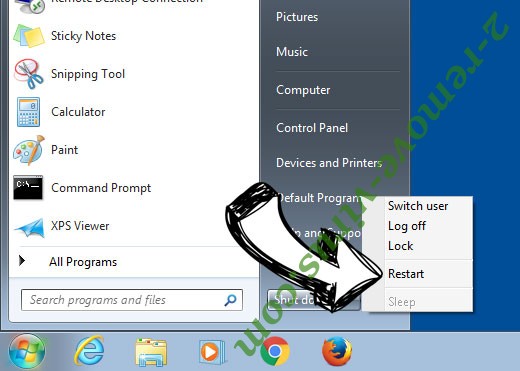
- Start tapping F8 when your PC starts loading.
- Under Advanced Boot Options, choose Safe Mode with Networking.

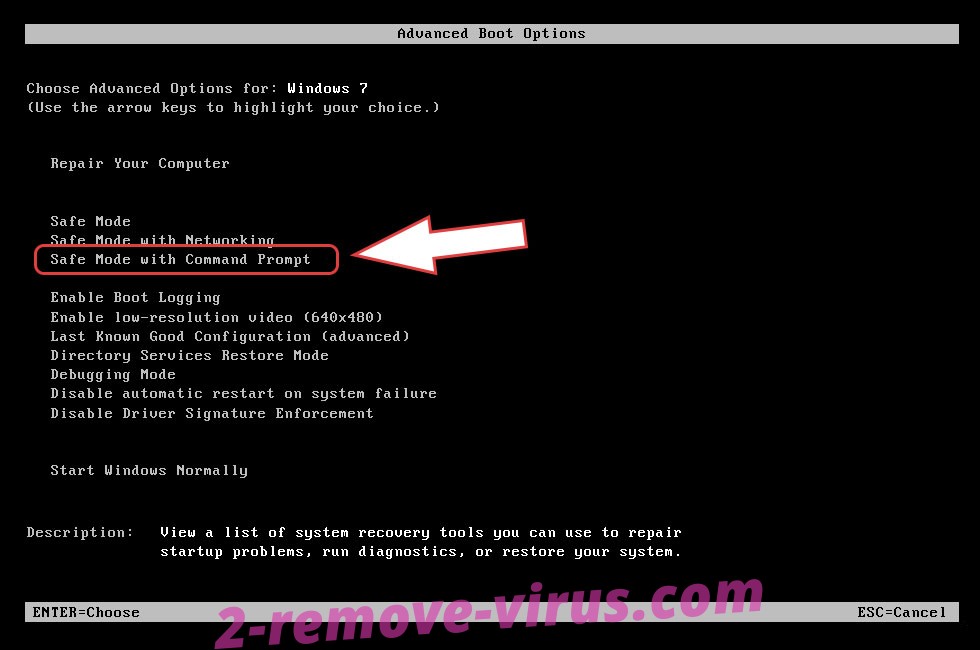
- Open your browser and download the anti-malware utility.
- Use the utility to remove 6y8dghklp Ransomware
Remove 6y8dghklp Ransomware from Windows 8/Windows 10
- On the Windows login screen, press the Power button.
- Tap and hold Shift and select Restart.

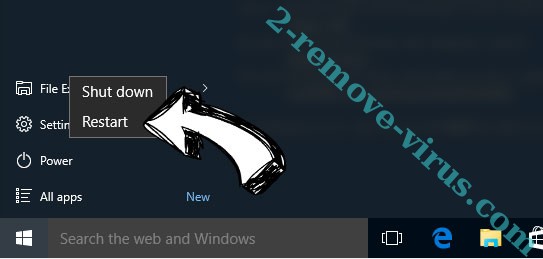
- Go to Troubleshoot → Advanced options → Start Settings.
- Choose Enable Safe Mode or Safe Mode with Networking under Startup Settings.

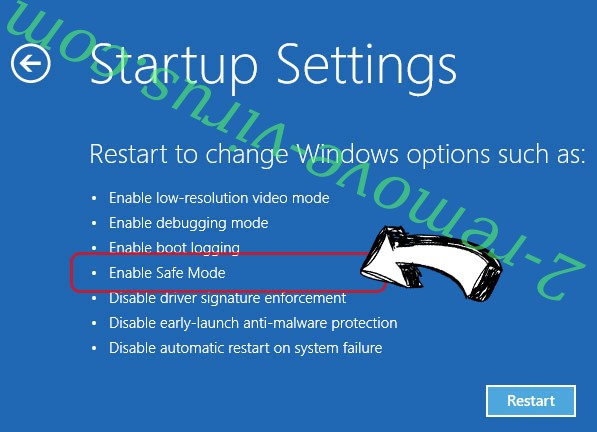
- Click Restart.
- Open your web browser and download the malware remover.
- Use the software to delete 6y8dghklp Ransomware
Step 2. Restore Your Files using System Restore
Delete 6y8dghklp Ransomware from Windows 7/Windows Vista/Windows XP
- Click Start and choose Shutdown.
- Select Restart and OK


- When your PC starts loading, press F8 repeatedly to open Advanced Boot Options
- Choose Command Prompt from the list.

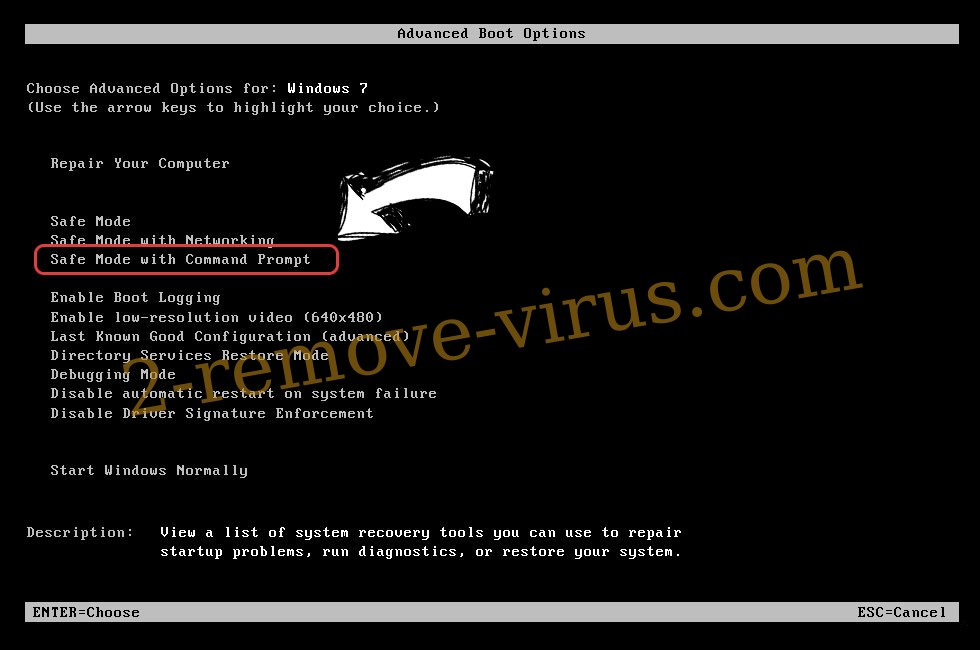
- Type in cd restore and tap Enter.

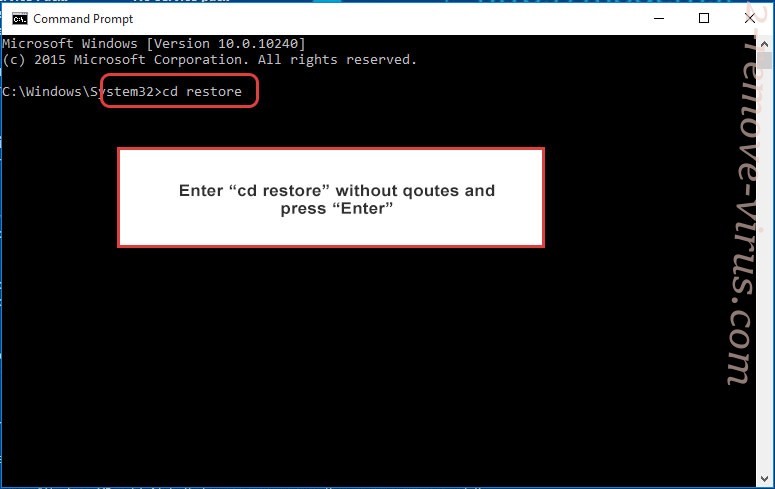
- Type in rstrui.exe and press Enter.

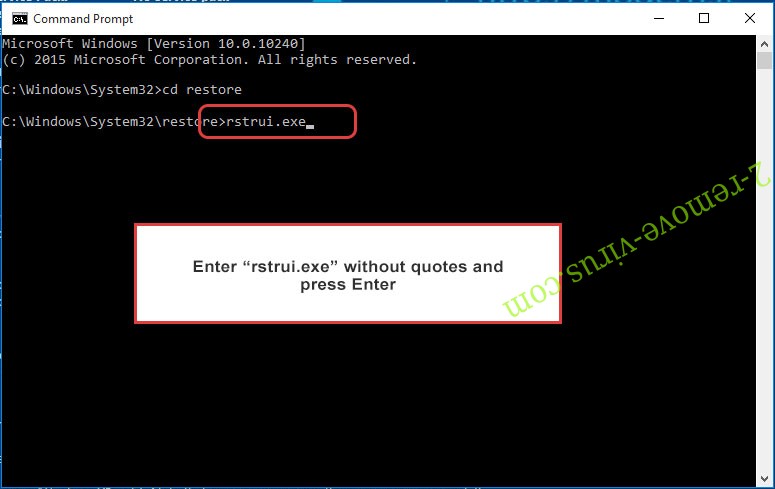
- Click Next in the new window and select the restore point prior to the infection.

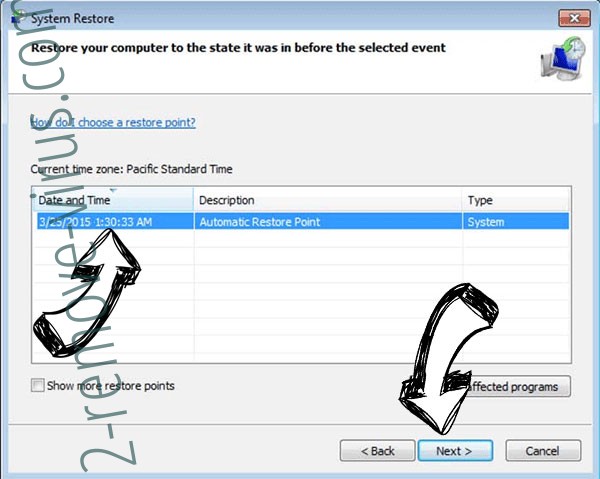
- Click Next again and click Yes to begin the system restore.

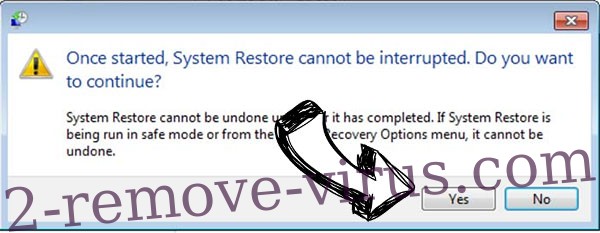
Delete 6y8dghklp Ransomware from Windows 8/Windows 10
- Click the Power button on the Windows login screen.
- Press and hold Shift and click Restart.


- Choose Troubleshoot and go to Advanced options.
- Select Command Prompt and click Restart.

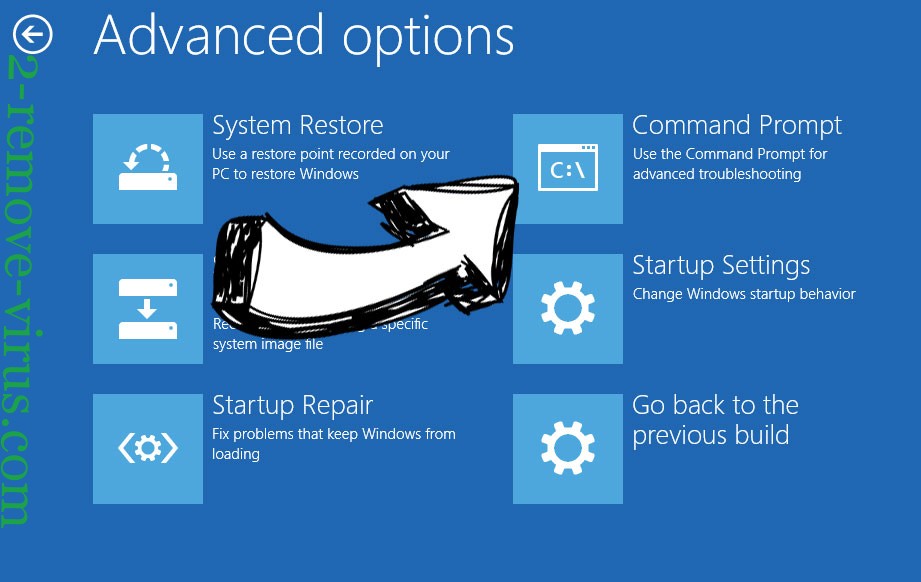
- In Command Prompt, input cd restore and tap Enter.


- Type in rstrui.exe and tap Enter again.


- Click Next in the new System Restore window.

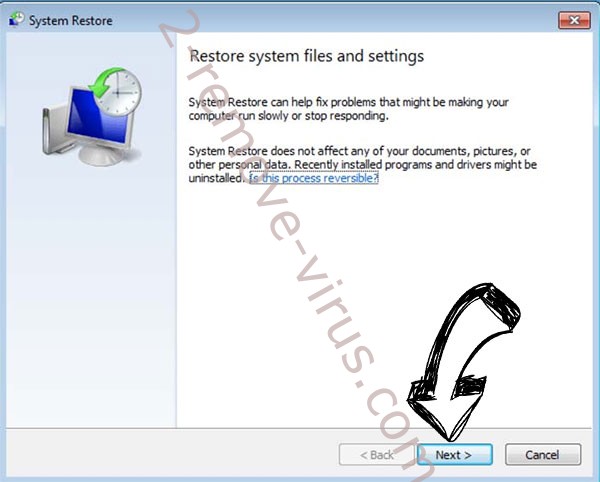
- Choose the restore point prior to the infection.


- Click Next and then click Yes to restore your system.


Site Disclaimer
2-remove-virus.com is not sponsored, owned, affiliated, or linked to malware developers or distributors that are referenced in this article. The article does not promote or endorse any type of malware. We aim at providing useful information that will help computer users to detect and eliminate the unwanted malicious programs from their computers. This can be done manually by following the instructions presented in the article or automatically by implementing the suggested anti-malware tools.
The article is only meant to be used for educational purposes. If you follow the instructions given in the article, you agree to be contracted by the disclaimer. We do not guarantee that the artcile will present you with a solution that removes the malign threats completely. Malware changes constantly, which is why, in some cases, it may be difficult to clean the computer fully by using only the manual removal instructions.
